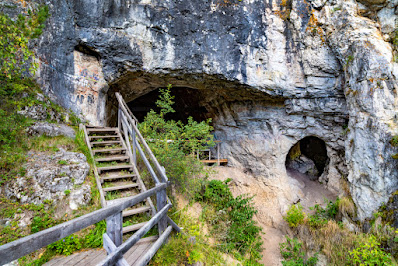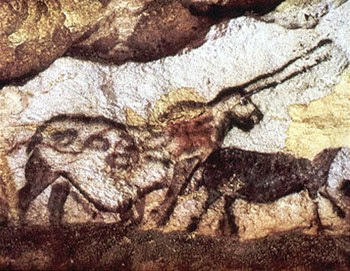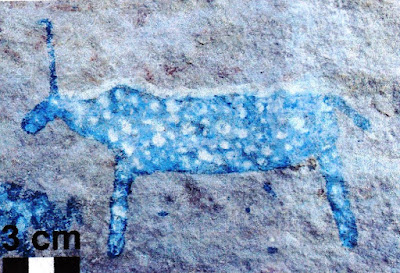Is it? Or is it not? This large rock formation which seems to resemble a crude sculpture of a human face is the subject of the debate – is it natural or man-made? These large, natural manifestations have always fascinated humans – how can geology resemble life so closely?
“The Harakbut Face, known by the native Harakbut tribesmen as the Rostro, which means face, is located in Peru’s Amarakaeri Communal Reserve. This vast area is situated in the southern Amazon region of Peru, and encompasses a region of 402,335.62 hectares (994,192 ac.). Located in the Madre des Dios region, the reserve takes up a great part of the homeland of the Harakbut tribe.” (Vuckovic 2020) This great stone face is a wonderful example of the phenomenon. Not only does it closely resemble a gigantic human visage from some angles, it is a stern visage.
“It is estimated that this native tribe lived in the basins of the Colorado and Madre des Dios rivers for several thousand years, and numerous complex myths and legends have survived to this day. One mentions the Harakbut as the ‘Warrior People,’ destined to protect the ancient forests of the Amarakaeri. Today the Amarakaeri Communal Reserve is home to ten indigenous communities and is hailed as Peru’s most pristine environment in the Amazon rainforest.” (Vuckovic 2020)
Humans seem
to have an inborn tendency to accord phenomena such as this a spiritual
significance. Although we now know about Pareidolia, in the eras before the
modern science of psychology such resemblances seemed miraculous.
“Among the Harakbut, this location is utterly sacred. Agreed that it represents their most distant ancestor, these rock faces are said to be created by Toto, a powerful primordial spirit. However, whether or not this face is a man-made object remains debatable. Important research that was conducted on site can imply that this is in fact a lithological structure, a clear result of geomorphological processes. This again points us towards the widespread phenomena of pareidolia, through which the human eye often spots familiar symbols and shapes from natural objects and things. If this is in fact a fully natural creation, it is unmistakably lifelike and nature really outdid itself. But some staunch believers can still adhere to the claim that the Harakbut face is made by ancient man.” (Vuckovic 2020) And when approached from the one side it is amazingly convincing, although some missing elements like nostrils, ears and lips are apparent. Even seen from almost directly to the front it is still human face-like. It is only when the other side is seen that it becomes obvious that the so-called ‘Hakabut Face’ is the result of natural geomorphic processes, and is not manmade.
“Allegedly there are several of
these big heads spread over the vast Harakbut territory, but El Rostro remains
the iconic one. Located in a remote area of the rainforest, it is difficult to
reach, requiring a challenging trek. But the sight of this incredible structure
is a reward in itself. Perched over a wild and rapid flowing Amazonian river,
emerging from the dense foliage, is an oddly realistic human face, its sharp
lines jutting from the cliff face.”
(Amazing Nature Blog 2023)
“This sacred location is made from sedimentary rock, aged and covered by a thin layer of bright green moss. One glance – both from profile and front – is enough to let you know that it is, without mistake, a human face peering towards the jungle. A sharp, aquiline nose with oddly straight and precise lines, combined with the jutting brow and prominent under bite lower jaw, all portray a serious and powerful male figure, akin to a great god, a tribal chieftain, or a venerated ancestor.” (Amazing Nature Blog 2023) While we do not have the right to demean the Harakbut for their beliefs, as modern, 21st century Westerners, we should recognize a duty to take such an example for what it really is – a superstition, but, also an amazing freak of nature.
NOTE: Some images in this posting were retrieved from the internet with a search for public domain photographs. If any of these images are not intended to be public domain, I apologize, and will happily provide the picture credits if the owner will contact me with them. For further information on these reports you should read the original reports at the sites listed below.
REFERENCES:
Amazing Nature Blog, 2023, The Mystery of the Harakbut Face: Man-Made Monument or Natural Phenomenon?, 25 April 2023, https://wildwingsnaturez.vercel.app/the-mystery-of-the-harakbut-face-man-made-monument-or-natural-phenomenon. Accessed online 29 April 2023.
Vuckovic, Aleksa, 2020, The Harakbut Face: Man-Made Monument or Natural Phenomenon?, 8 November 2020, https://www.ancient-origins.net. Accessed online 29 April 2023.

















.jpg)








